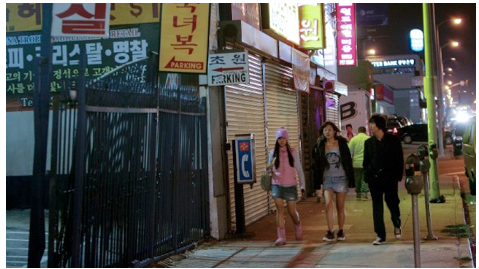CommentsHERE’S WHAT I KNOW-In the Netflix docuseries segment “Chelsea Does Racism”, the comedian drives through LA’s neighborhoods with friend Loni Love. “I had no idea that they have these little sub-communities everywhere,” Chandler comments as she drives through Koreatown, the MacArthur Park area, and Pico-Robertson. “I feel like I have actually self-segregated.”
Decades after the 1968 passage of the Fair Housing Act, which shields renters, buyers, and borrowers from numerous types of housing discrimination, have our communities become less segregated?
Diversification impacts all sorts of issues, from gentrification and environmental justice to police bias. A report by Michael DM Bader and Siri Warkentien published in Sociological Science last year looked at the demographics of LA, as well as of New York, Chicago, and Houston from 1970 through 2010. The study concluded that 35 percent of the 4,000 neighborhoods studied face a future upswing in segregation, despite a diverse makeup today.
Of the four cities, Los Angeles leads in the number of neighborhoods with “quadrivial integration” or sizeable populations of whites, blacks, Asians, and Latinos. In fact, about one in five LA area neighborhoods, mostly in outlying suburbs, fit that criteria. On the flip side, about 40 percent of LA’s racially diverse neighborhoods are becoming increasingly segregated.
In tracking neighborhood change in LA, the study notes Los Angeles was a trailblazer in diversity. By 1970, about 17 percent of Angelenos identified as Latino and by 2010, about 16 percent were Asian. Since 1990, the metropolitan area has been majority-minority.
As a result, the Los Angeles metro area is home to a large share of quadrivial neighborhoods. The trajectory of quadrivial neighborhoods essentially parallels the growth of neighborhoods the study refers to as “stable white.” The study describes more concentrated Latino segregation in the metro area, with more Latino enclaves in LA than in the other three cities studied. Growing numbers of Asian immigrants have led to neighborhood demographics shifting from primarily white to Asian, dispersed throughout the metropolitan area.
Bader says gradual succession has replaced white flight as a driver of population change. “Neighborhoods undergo slow, but steady increases in one racial group that makes them the dominant group in the neighborhood over time,” he notes. “We don’t find much evidence of a white flight after the 1970s. Instead, we suspect that what happens is that whites happily integrate with neighbors who move into their neighborhoods; but they don’t look for integrated neighborhoods when they search for places to move.” He adds that the exodus of white residents from a neighborhood can be attributed to life cycle events like moving out of parents’ house, marriage, new jobs, births or other events. Over time, the white residents age and die; the proportion of white residents declines, except in quadrival neighborhoods, and the black, Latino, and Asian populations may increase.
What will the future hold for Los Angeles? The Bader Walkertien report concludes, “Los Angeles shows both the promise and peril of the future: a large percentage of durably integrated neighborhoods with increasing immigration leading to a new suburban segregation.”
As Los Angeles and the rest of the country becomes more diverse, we need sound public policies to increase inclusion and to ensure that residents of diverse neighborhoods receive the amenities and services needed to thrive.
Click here for more information on the Bader Walkertien study.
(Beth Cone Kramer is a Los Angeles-based writer and writes for CityWatch.) Prepped for CityWatch by Linda Abrams.
















